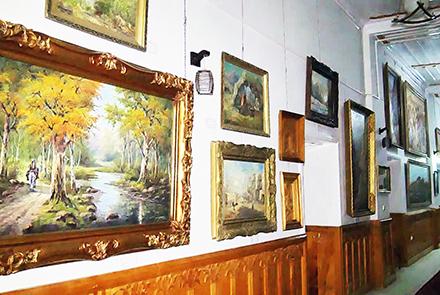Artwork and artifacts from the Afghan National Gallery that were damaged during the Taliban regime have now been restored.
Sabera Rahmani, the director of the National Gallery, stated that the Taliban damaged more than 200 works from the National Museum and National Gallery after blowing up the Bamiyan Buddha statues.
According to Rahmani, 29 pieces of work have been restored and some of them are now ready to be exhibited in the gallery.
Foreign artists, aided by the British Council, have lead the restoration process.
Another 150 pieces are being prepared for restoration.
The officials in the National Gallery stated that the Taliban targeted and destroyed the artifacts because they depicted human faces.
“After the Buddhist statues of Bamiyan were destroyed, they [Taliban] came to the National Museum and Gallery and tore around 200 to 210 pieces.” said Rahmani, the Afghan National Gallery director.
During this time, painters in the National Gallery attempted to save the paintings containing human faces by covering them with erasable colors.
Sebghatullah Rahimi, a guide at the National Gallery, commented on one of the paintings: “It is a woman sitting on wooden stairs leading to the roof, and she is doing something. The lady was covered with colored paint, this is one of the pieces that the painters tried to save. So we removed the colored paint and revealed the figure.”
Some of the works destroyed during the Taliban regime are on display in a room of the National Gallery.
While simultaneously working to restore the 29 pieces of work for the National Gallery, the British Council trained a number of the gallery’s staff members in the restoration of artworks.
“Fortunately, the project was able to restore our 29 works in three stages, painted in oil and watercolor," said Khairuddin Ibrahim Khail, director of the National Gallery repository.
The officials of the National Gallery further stated that the institution has more than seven hundred works of art including oil paintings, miniature models, mosaics and hand embroidery. Yet more than 200 pieces were destroyed or disappeared during the civil war.


